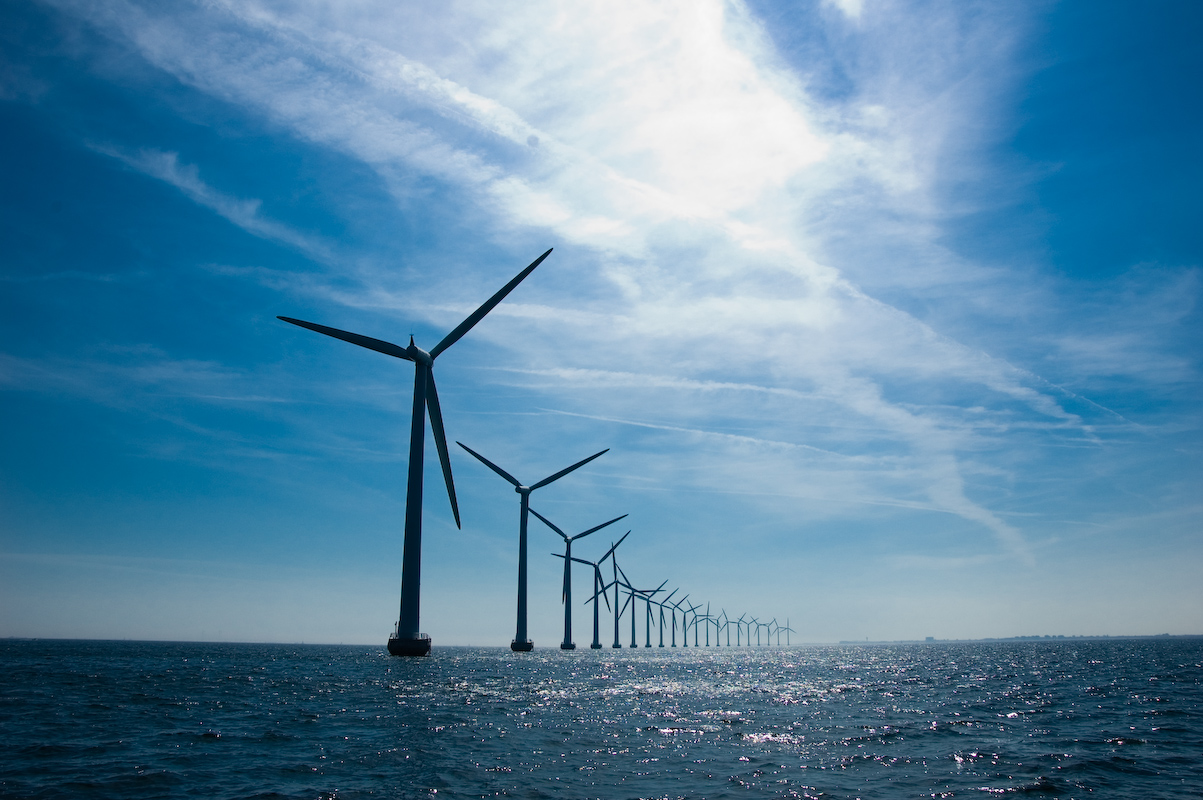Significant Growth on the Horizon for US Offshore Wind
After a slow start, development of the US's significant offshore wind resources is now truly up and running, with twelve projects in advanced stages of development nationwide. Indeed, with the National Renewable Energy Laboratory estimating its offshore wind potential at over 4,000GW, there is much to be optimistic about as the industry gets up to speed. While the recent change of administration and its desire to restore investment in fossil fuels is cause for concern, the states of Massachusetts and New York have both made commitments to offshore renewable energy that are legally binding, and separate from the federal budget.
The epicenter for this activity continues to be the East Coast, with the 290-million-dollar Block Island wind farm commissioned in late 2016. While the wind farm, located 6km off the eponymous Block Island, directly to the south of Rhode Island, consists of a modest five turbines and 30MW capacity, its significance as the US's first offshore wind farm is far greater.
Doubtless, the project has gained from the experience the industry acquired following the demise of the Cape Wind project. This 468MW wind farm seemed to signal the extent of the US's ambitions when it comes to offshore wind. The loss of state and financial backing, however, in addition to legal wrangling, saw the project scrapped - at least for the time being. The East Coast will likely remain the focus for offshore wind in the US for the foreseeable future, due to the abundant weather resource, shallow water, and ease of landfall. It is expected that once the technology for floating wind turbines matures, the West Coast will develop its own offshore wind energy industry.
However, the growth of US offshore wind remains very much in its infancy. By contrast, across the Atlantic, Europe commissioned its first offshore wind farm in 1991, securing its position as a world leader in the sector, easily outpacing other regions. This discrepancy has much to do with the respective legal and regulatory incentives in place; while EU nations have long been setting targets in terms of the amount of electricity they generate from renewable sources, the US has only recently begun to adopt similar measures. The state of New York, for instance, is now seeking to secure 50% of its power from renewable sources by 2030. Additionally, a bipartisan bill proposes establishing offshore wind farms in New York waters, which will generate fifty times the power output of the Block Island facility.
 The delay in the development of US offshore off its east coast, relative to that of Europe, does have some advantages. Foremost is the opportunity to learn from companies who have been operating in European markets for decades, allowing newcomers to avoid many of the teething problems these markets experienced at the outset. Of course, this is complicated by the Jones Act, which requires all vessels operating in US waters to be constructed in the US, and owned and crewed by American citizens.
The delay in the development of US offshore off its east coast, relative to that of Europe, does have some advantages. Foremost is the opportunity to learn from companies who have been operating in European markets for decades, allowing newcomers to avoid many of the teething problems these markets experienced at the outset. Of course, this is complicated by the Jones Act, which requires all vessels operating in US waters to be constructed in the US, and owned and crewed by American citizens.
The Block Island wind farm was built using turbines sourced in Europe. With the sizeable onshore wind energy industry in the US, this supply chain may be able to contribute significant support to offshore wind in the future. Even though lessons can be learned from the European experience, it is important to keep in mind the differences between US and European operations. Currently there is limited local supply of sufficiently large monopoles to follow the European model for wind farms. This may lead to alternatives, such as jackets, being manufactured domestically because of the Gulf of Mexico energy industry.
Partnering with firms that are major service providers in the European offshore wind market will be an advantage - as long as they can also demonstrate an understanding of the local supply chain, and provide strong support for contractors and developers at the early stages of investment. This can help unlock the significant resource potential in the US, and introduce efficiencies and best practices that will reduce project costs. This, in turn, will further accelerate the market's growth.
As it looks to the future and continues to mature, controlling costs will continue to be key to developing bankable US offshore wind projects. To do so will require sufficient mitigation of, and responsiveness to, the risks in maritime and offshore projects, as the equipment costs involved will be significantly greater when compared with onshore wind.
As turbines continue to grow ever larger, so does the potential for bigger energy yields. With this growth comes a greater need to ensure that necessary infrastructure and logistical considerations are in place. A failure to adequately protect against these risks, and ensure the safe transportation and lifting into place of these turbines, can jeopardize a project's ability to meet production targets.
While there is much to learn from Europe's experience in offshore wind, the development of the US sector presents its own challenges, the majority of which will have little to do with the current incumbent to the presidency. Offshore wind in the US has now reached the point where the potential for employment, plummeting prices, and considerable scope for state-level autonomy, promise clear seas for the industry. Nevertheless, an ability and willingness to draw on relevant expertise - particularly with respect to the technological challenges outlined above and risks - will be essential to US offshore wind achieving its full potential.

Dr R.V. Ahilan is Group Director, Renewables Advisory & Energy Technology. He is a Chartered Engineer and Fellow of both IMarEST and RINA. He holds a BSc (Leeds) and MS (Caltech) in Civil Engineering, a PhD (Cantab) in Engineering Fluid Mechanics and an MBA (Imperial). He is a well-known and highly respected technology and business leader, with over three decades of industry experience, more than 15 years of which has been at board level. Prior to LOC, Ahilan was EVP of the Renewables Advisory Division of DNV GL, with strategic and operational responsibility for the world's largest technical advisory firm in renewable energy, formed by the merger of GL Garrad Hassan (of which he was President) and the renewables business of DNV.
LOC Group | www.loc-group.com
Volume: 2017 May/June











.jpg?r=3667)
